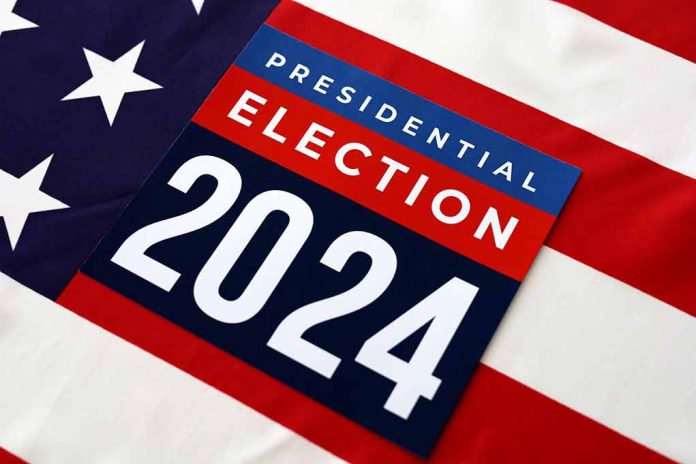
The battle for America’s economic future intensifies with Trump and Harris presenting starkly divergent policies.
At a Glance
- Trump and Harris’s economic strategies are central to their campaign narratives.
- Trump favors tax cuts to stimulate investment; Harris seeks to tax the wealthy to fund social initiatives.
- Economy remains a key election issue, with mixed public preferences on handling it.
- Both candidates promise substantial reforms to improve American living standards.
Economic Visions at a Crossroads
The American electorate faces a critical decision in the upcoming election, with Donald Trump and Kamala Harris proposing vastly different economic agendas. Trump advocates for aggressive tax cuts, aimed primarily at businesses and affluent individuals, to boost economic growth. In contrast, Harris proposes tax hikes on large corporations and the ultra-wealthy, intending to finance expansive social programs, including housing construction and family tax relief.
Both candidates are set to unveil their economic plans in key speeches—Trump at the Economic Club of New York and Harris in Portsmouth, New Hampshire. Recent polls suggest a divided electorate, with Trump favored for his handling of economic affairs.
Trump’s Vision for Economic Revival
Trump’s economic policy promises include cutting corporate taxes to 15% and eliminating taxes on Social Security income. He plans to impose tariffs on imports to boost domestic manufacturing and protect American jobs, aiming to strengthen the U.S. economy by reducing reliance on foreign goods. While some analysts note potential cost increases for consumers, supporters argue that these policies could lead to long-term economic growth and greater national self-sufficiency. Trump vows to tackle inflation through executive orders, asserting his administration will utilize every tool to lower consumer prices and enhance the American standard of living.
“On my first day back in the Oval Office, I will sign an executive order directing every Cabinet secretary and agency head to use every tool and authority at their disposal to defeat inflation and to bring consumer prices rapidly down. It will be a whole-of-government effort to raise the standard of living and make American life affordable again,” Trump says.
Harris’s Inclusive Economic Strategy
Harris’s strategy focuses on inclusivity, with plans to raise the corporate tax rate to 28% and introduce new taxes on millionaires’ capital gains. She proposes a comprehensive approach to improving American households’ economic conditions, including expanding Medicare coverage and promoting labor reforms through the PRO Act.
“We will create what I call an opportunity economy. An opportunity economy where everyone has a chance to compete and a chance to succeed,” Harris says.
Her agenda includes building three million housing units and increasing the child tax credit, primarily for middle- and low-income families. While Harris advocates these policies as steps toward greater prosperity, skeptics argue that her approach could lead to higher costs for businesses and may not deliver the intended economic growth.
“To borrow from Ronald Reagan’s famous “Are you better off now than you were four years ago?”: Voters should ask themselves if they were better off under Trump or Joe Biden and Kamala Harris,” writes the New York Post.
In this election, Americans face a choice between two contrasting economic visions: Trump’s focus on tax cuts, reduced regulation, and stronger domestic manufacturing aims to stimulate growth and protect American jobs through a free-market approach, while Harris’s plan centers on taxing corporations and the wealthy to fund expanded social programs. For those who prioritize economic freedom, Trump’s strategy offers a path toward self-reliance and lower inflation, highlighting a belief that American prosperity is best driven by empowering businesses and reducing the government’s economic footprint.








